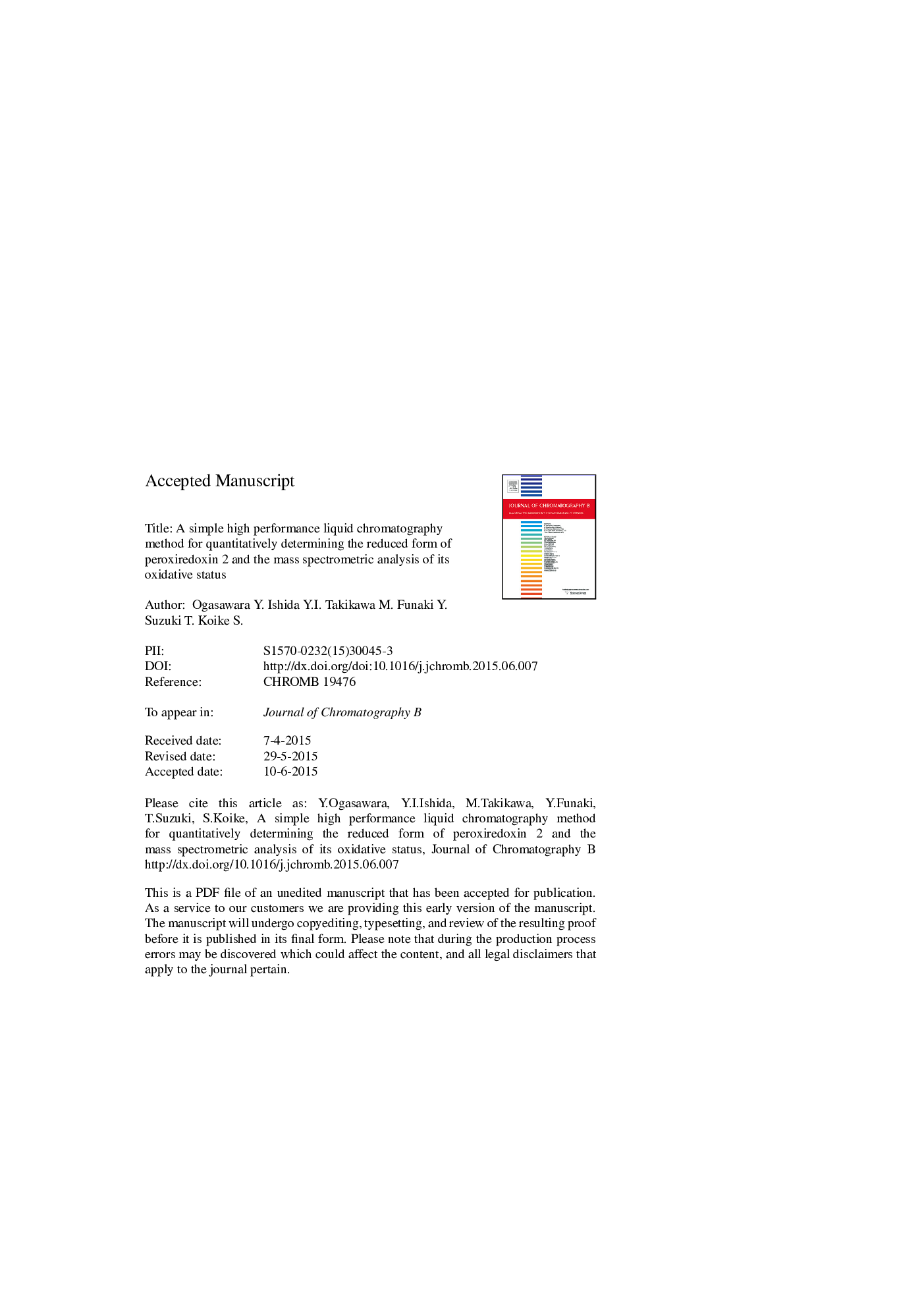| Article ID | Journal | Published Year | Pages | File Type |
|---|---|---|---|---|
| 7617142 | Journal of Chromatography B | 2015 | 22 Pages |
Abstract
Peroxiredoxins (Prxs) are a family of thiol peroxidases, which have been suggested to serve as biomarkers for diseases caused by oxidative stress. In this study, we established a high performance liquid chromatography (HPLC) method for quantifying the amount of Prx2 in red blood cells (RBCs). RBC proteins were separated using HPLC, and a single peak was detected that matched that produced by recombinant Prx2. Under improved conditions, the calibration curve for Prx2 (reduced form) was linear over the range of 0.5-20.0 μg with a correlation coefficient of 0.999. The minimum detectable level of the recombinant Prx2 was 0.2 μg, with a signal-to-noise ratio of 3 per 20 μl of injection volume. SDS-PAGE and mass spectrometric analysis showed that the proteins comprising the peak were almost exclusively Prx2. Further high-resolution analysis using nanoLC-MS/MS demonstrated that the oxidation sensitive, Cys-51 was carbamidomethylated by iodoacetamide-alkylation during in-gel digestion but was not modified with sulfinic acid (âSO2H) or sulfonic acid (âSO3H). These results indicated that the separated Prx2 was the reduced form and not the hyperoxidized form. These basic experiments allowed us to determine the relative amounts of native Prx2 in RBCs taken from healthy subjects. The average levels of Prx2 in male and female subjects were 7.28 ng/mg and 8.29 ng/mg, respectively, and no significant difference was observed between the sexes. Therefore, the HPLC method with UV detection described herein offers a convenient method to quantitatively determine the levels of reduced form of Prx2 and its oxidative decrease in human RBCs.
Keywords
Related Topics
Physical Sciences and Engineering
Chemistry
Analytical Chemistry
Authors
Ogasawara Y., Ishida YI., Takikawa M., Funaki Y., Suzuki T., Koike S.,
